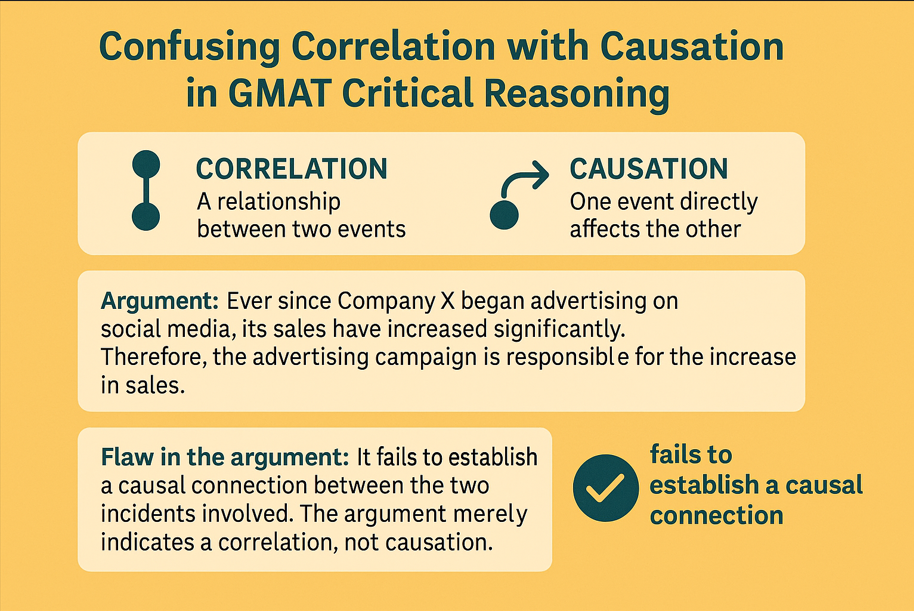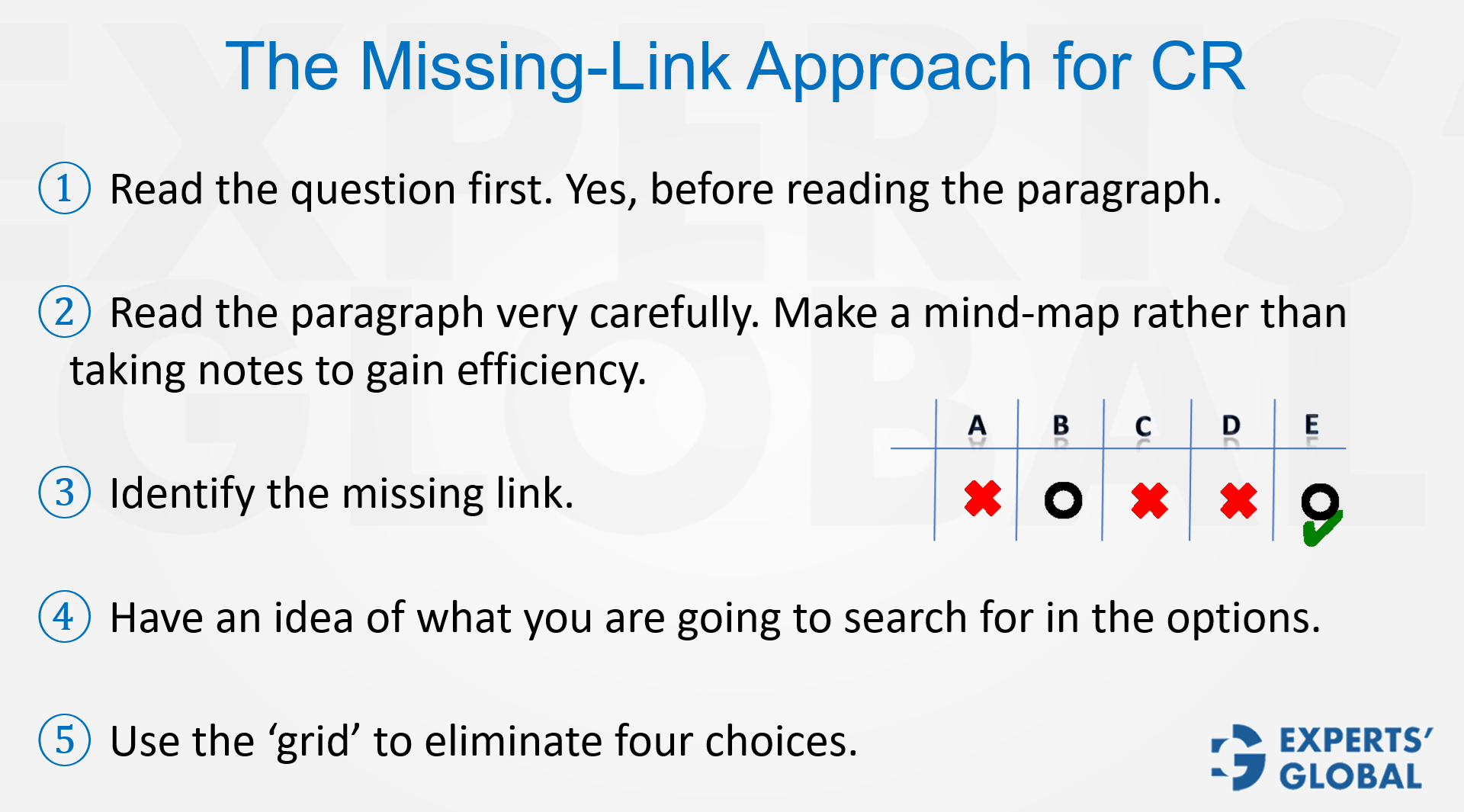Invest 30 seconds...
...for what may lead to a life altering association!
Help Line
- +91.8800.2828.00 (IND)
- 1030-1830 Hrs IST, Mon-Sat
- support@expertsglobal.com
...for what may lead to a life altering association!


On GMAT Critical Reasoning, confusing correlation with causation means seeing two patterns move together and assuming one produces the other. Example: Coffee shop visits and umbrella sales rise together; therefore, coffee causes umbrella purchases. Actually, rainy days drive both. Correlation is not proof of causation.
Correlation does not prove causation. In GMAT Critical Reasoning, test any claimed link by checking the timeline, looking for other possible causes, and asking if the effect might actually be the cause. Use these checks to strengthen, weaken, or evaluate the claim. The video shows the method; the article gives a short checklist and quick examples for practice. These habits refine quantitative reading and argument appraisal during GMAT prep and support evidence-based judgment valued in MBA admissions and professional analysis.

One of the common logical fallacies tested on GMAT Critical Reasoning is the confusion between correlation / coincidence and causation. This occurs when the test-taker assumes that because two events occur together, one must have caused the other. Recognizing this flaw is a crucial step toward accuracy in several CR questions.
Correlation simply means that two events occur at the same time or show some form of relationship. Causation, however, establishes a direct cause-effect link between them. The GMAT deliberately blurs this distinction to test whether you can critically evaluate reasoning instead of accepting flawed logic.

Many people who use oil heaters are also thin. Therefore, oil heaters lead to weight loss.
Grandma sneezed, a tornado hit Nebraska.
Glove sales rise and flu cases rise.
Consider an argument that claims:
Ice cream sales increase whenever drowning incidents rise, so eating ice cream must cause drowning.
This reasoning is clearly flawed. Both events happen during hot weather, but one does not cause the other. This is a correlation, not causation.
Here is a reasoning:
Ever since Company X began advertising on social media, its sales have increased significantly. Therefore, the advertising campaign is responsible for the increase in sales.
The flaw is clear. While sales and advertising occurred together, the argument does not prove that advertising caused the growth. Other factors, such as seasonal demand or competitor decline, could explain the increase. In absence of a causal connection between the advertising and the increased, the argument stands unconvincing.

Consider the following…
In the first quarter of last year, the price of crude oil increased by 20%. During the same period, the Japanese yen dipped 10% against the US dollar. The increase in the price of crude oil led to a weaker yen.
Question: A serious flaw in the reasoning of the argument is that…?
Correct Answer: It fails to establish a causal connection between the two incidences it describes.
Step 1: Start with the question stem to clarify exactly what is required.
Step 2: Examine the reasoning closely; sketch a mind-map and locate the missing-link.
Step 3: State your broad expectation from the correct answer choice.
Step 4: Remove four options; the option left is your answer.
Before finalizing, verify.
When faced with such arguments, your expectation from the correct answer choice should be a statement that highlights the absence of a causal link. For instance, a fine answer choice would point out that the argument “fails to establish a causal connection between the two incidents.”

This lesson emphasize the need to separate correlation from causation in GMAT Critical Reasoning. Two events occurring together does not mean one causes the other; alternative factors or reversed causality may explain the pattern. Always test whether a supposed cause truly precedes and drives the effect. Practicing these distinctions through GMAT simulations sharpens logical precision, strengthens analytical thinking, and prepares you for evaluating arguments in both academic assessments and real-world decision-making contexts, including professional and management scenarios.
The lesson on distinguishing correlation from causation extends far beyond GMAT Critical Reasoning. In life, as in arguments, patterns may appear convincing, yet wisdom lies in questioning whether one truly leads to the other. Success in academics, careers, and personal choices often depends on recognizing deeper drivers rather than surface coincidences. Approaching reasoning with clarity ensures sound judgment in GMAT mock practice, in MBA applications where evidence must support claims, and in professional decisions where causal clarity shapes lasting impact. Cultivating this discernment enriches both intellectual rigo